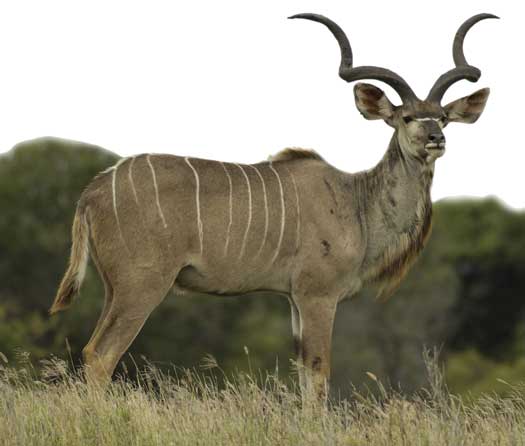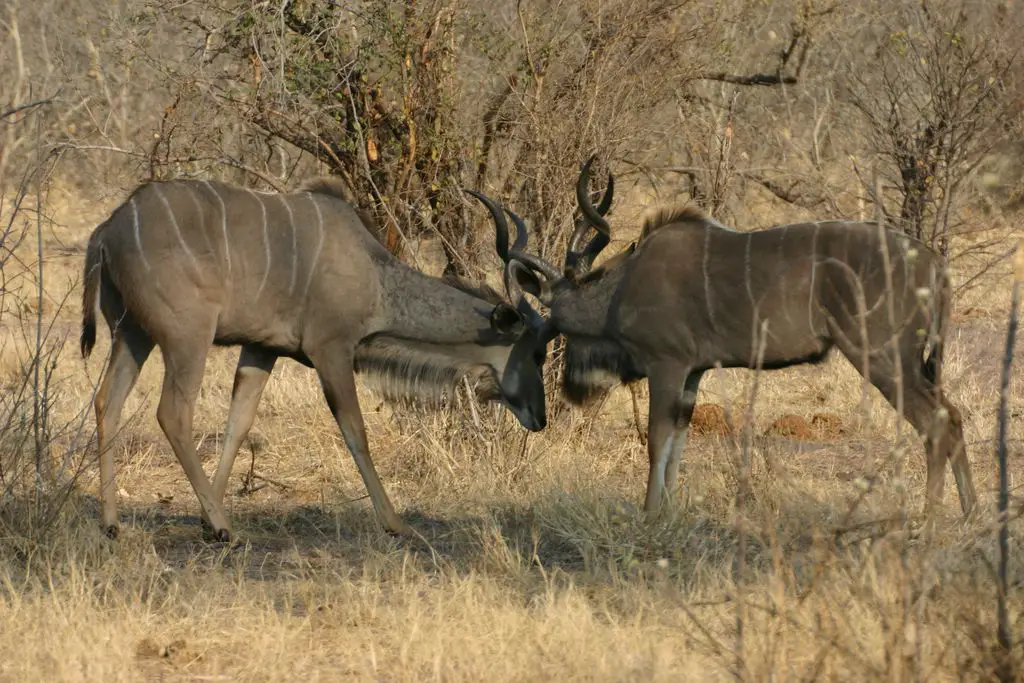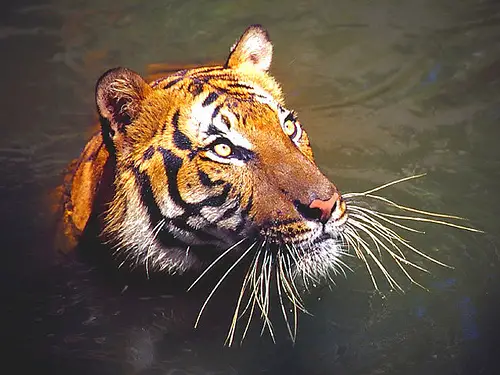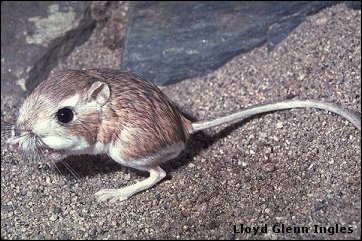Greater Kudu
The Greater Kudu is a very strong, but skittish animal that spends most of its time in a shelter. They’re one of the biggest antelopes of Africa, reaching up to 1,5 meter height and 2,5 m length. These massive animals have benefited from human populations moving to new areas in Africa, as many areas that were previously too dry for these animals have now become suited for their lifestyle.
Probably the most spectacular detail of the Kudu’s appearance are the prominent horns that reach a length of up to 1,70 metres, wreathing in a spiral. Despite the impressive horns, this antelope is relatively defenseless and relies on its hearing to notice and, if possible, run away from any danger. The kudu’s fur is short and silky, and its colouration varies from gray to reddish brown, with 4-12 white stripes along the body. The head is generally darker and the neck is ornamented with a long “beard”.

Greater Kudus are one of the largest and strongest antelopes, but they're still vulnerable to many predators
Kudus live in small groups, made of 6-20 females and their calves, while the mature males either lead solitary lives or live in even smaller groups. They have many natural predators, including lions, leopards and wild dogs, which is why the Kudus are always attentive, and immediately inform other members of the group in case of danger. When compromised, the Kudu tries to leap to the closest bushes with jumps as high as 2,5 metres.
These antelopes live in hilly territories, with plenty of bushes and trees. They almost always try to stay close to a cover, and their diet consists mostly of the nearby trees’ leaves and fruits. Their feeding times are in early mornings and late evenings. The water is obtained either from nearby freshwater sources or gums and roots dug up from the ground.
When the mating period comes, Kudu males find females and start a ritual rut. Fights between males are also not unusual, although they’re more of a ritual than actual fighting, and the animals rarely get hurt. Copulation occurs with a prediction that the calves are born during the rain period, when food is abundant. The gestation period lasts for about 8 months and a single calf is born at a time. Young Kudus are nursed for about 5 months, and they reach sexual maturity at the age of 1-2 years old, while their total life expectancy is up to 23 years.
The biggest threats for these animals are not the natural predators, but rather poachers, who hunt these elegant antelopes for their horns. The Kudu population is on a decline, with their numbers decreasing every year and proper action needs to be taken in order to protect them from extinction.



